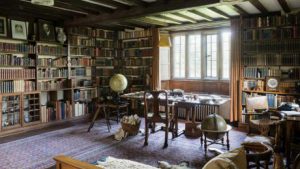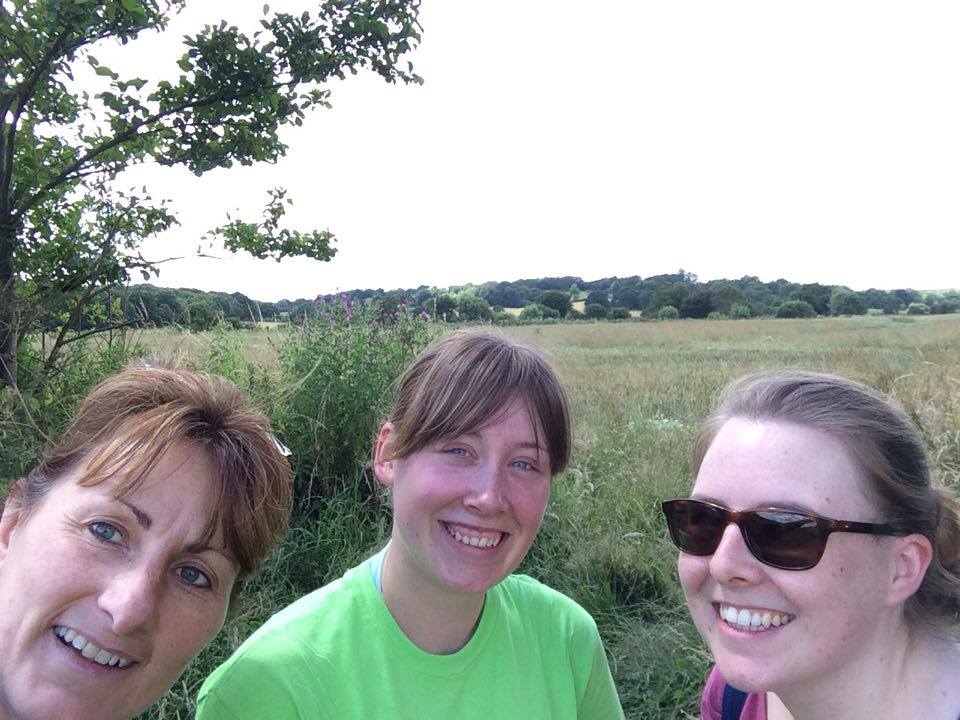A six day, 150km walk, which started on Tuesday August 16, and includes the National Trust’s Lamb House in Rye (once home to American writer Henry James), the centenary of whose death is celebrated this year, hopes to raise £7,000 towards a fundraising appeal.
A watermill needing funds is on a Trust property at Burwash on the A265 between Heathfield and Hurst Green – and about the same distance from Rye as Ashford is from Rye – and there are at least a dozen Trust properties to explore within similar distances from Rye.
Staff and volunteers from Rudyard Kipling’s house, Bateman’s, at Burwash are walking 150km across the Weald of Kent and East Sussex to raise funds towards their appeal to get their historic watermill repaired and making flour once again. The team is hoping to raise £7,000 towards their £150,000 target, with the walk set to take six days to complete. It will start at Bateman’s and pass through more than twenty local villages and towns on an ambitious circuit.
Park Mill is an 18th century watermill situated on the banks of the River Dudwell on the National Trust property’s estate in East Sussex. Prolific poet and author Rudyard Kipling purchased Park Mill alongside Bateman’s in 1902 and it features in many of his best-loved poems and stories such as “Puck of Pook’s Hill”, and “Below the mill dam” and “Sussex”.
The mill was initially restored back to working order in the 1970s, but needs our help again, as the main axle tree that is turned by the waterwheel has rotted and collapsed after 40 years’ service, bringing to a halt the production of Bateman’s flour. Donations from visitors and sales of raffle tickets have accumulated £56,000 towards the appeal so far, for which the staff at Bateman’s are very thankful.
The walk will be quite a challenge for the intrepid ramblers, who have never done anything like this before. Over the six days, the ambitious circuit goes through Ticehurst, Three Leg Cross, Lamberhurst, Kilndown, Goudhurst, Cranbrook, Sissinghurst, Biddenden, St Michael’s, Tenterden, Smallhythe, Appledore, Rye, Winchelsea, Icklesham, Westfield, Battle, Sedlescombe, Brede, Staplecross, Northiam, Ewhurst Green, Bodiam, Robertsbridge, Brightling, finally arriving back in Burwash next Monday August 22.
The walkers will also take in the wide range of National Trust places that sit snugly in the Wealden Landscape including Rye’s Lamb House together with Spriver’s Garden estate, Scotney Castle, Smallhythe Place, Winchelsea countryside, Battle countryside and Bodiam Castle, where visitors can cheer them on and donate to their worthy cause.
The team will be raising money through sponsorship from individuals and local businesses, who can support them through their Just Giving page, Text to Donate number and by old fashioned sponsorship form and collection bucket.
If you would like to sponsor the staff on their money-raising mission and help them reach their £7000 target, visit the Just Giving page, text BATE01 followed by £1, £2, £3, £4, £5 or £10 to 70070 or call Bateman’s office on 01435 882302.
For more information please contact Steph Poyton on 01435 884836 or Stephanie.Poyton@nationaltrust.org.uk. Alternatively see the video blog visit Facebook or follow the team on Twitter.
Bateman’s is a Jacobean house, was the home of Rudyard Kipling, and ‘That’s She! The Only She! Make an honest woman of her – quick!’ was how Rudyard Kipling and his wife, Carrie, felt the first time they saw Bateman’s. Surrounded by the wooded landscape of the Sussex Weald, this 17th-century house, with its mullioned windows and oak beams, provided a much needed sanctuary to this world-famous writer.

The rooms, described by him as “untouched and unfaked”, remain much as he left them, with oriental rugs and artefacts reflecting his strong association with the East. “Kim” was the first major piece of writing that he wrote from his study at Bateman’s which links him and his fond childhood memories to India with real clarity and devotion. Kim has been described as truly a master piece of descriptive writing. Kipling was awarded the Nobel Prize for literature in 1907 and Bateman’s is very much a family home that feels as though the Kiplings have just gone out for the day.
The National Trust looks after more than 600,000 acres of countryside, 775 miles of coastline and hundreds of special places across England, Wales and Northern Ireland.
[Dep. editor’s note: Bateman’s is worth a visit – I was last there many years ago and I remember drooling over Kipling’s study: on the first floor, beautiful mullioned window overlooking the Sussex countryside, the walls lined with books and his large writing table in the centre – the perfect study! It was also the only time I have seen a kingfisher. While leaning on the rail of the little bridge over the river, my, then young, daughter and I saw this most-attractive of birds, balanced stock still on a branch, then, in literally a flash, he had dived into the river after a quarry unseen by us mere humans, and was gone.]
Photos: Steph Poyton



